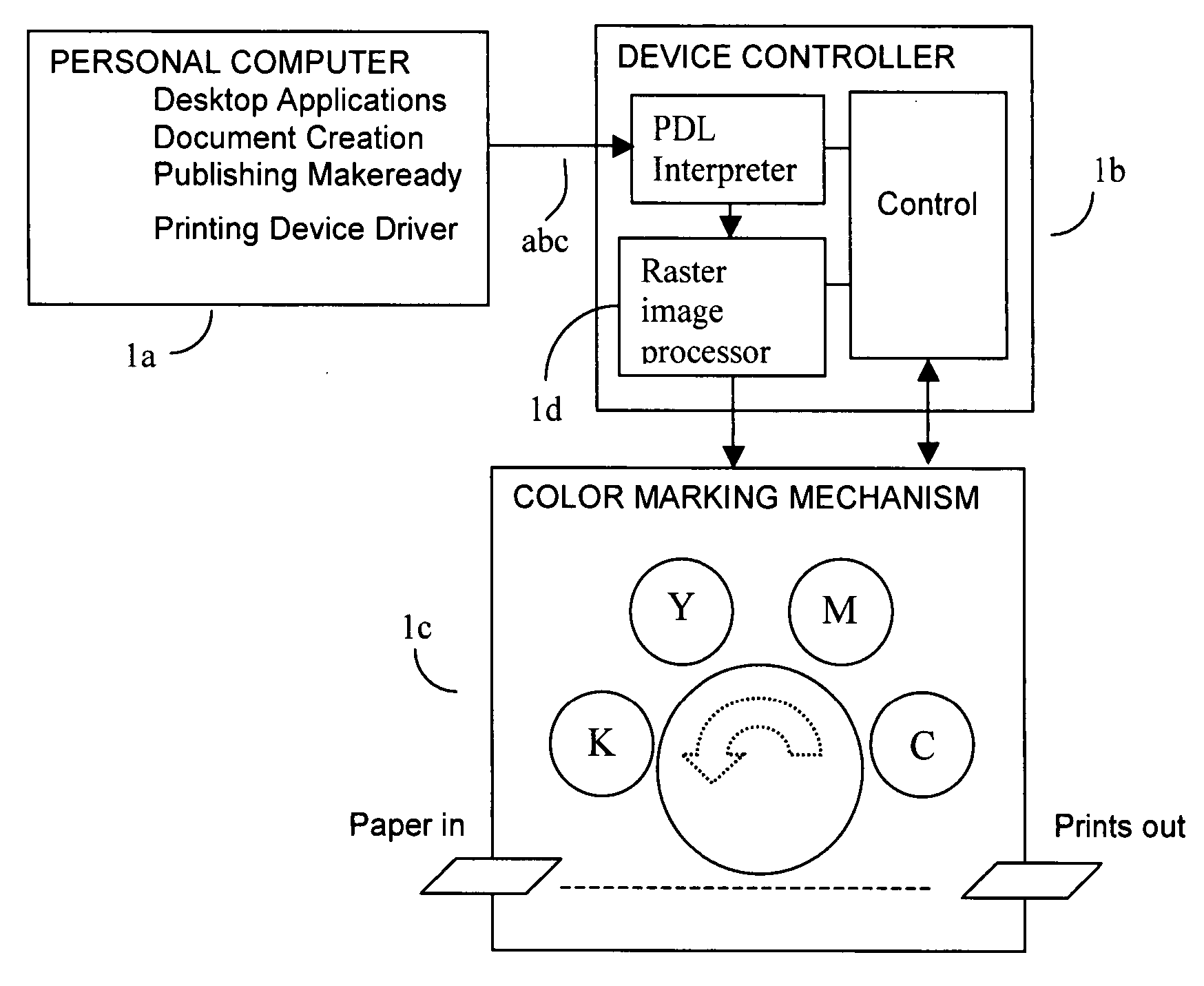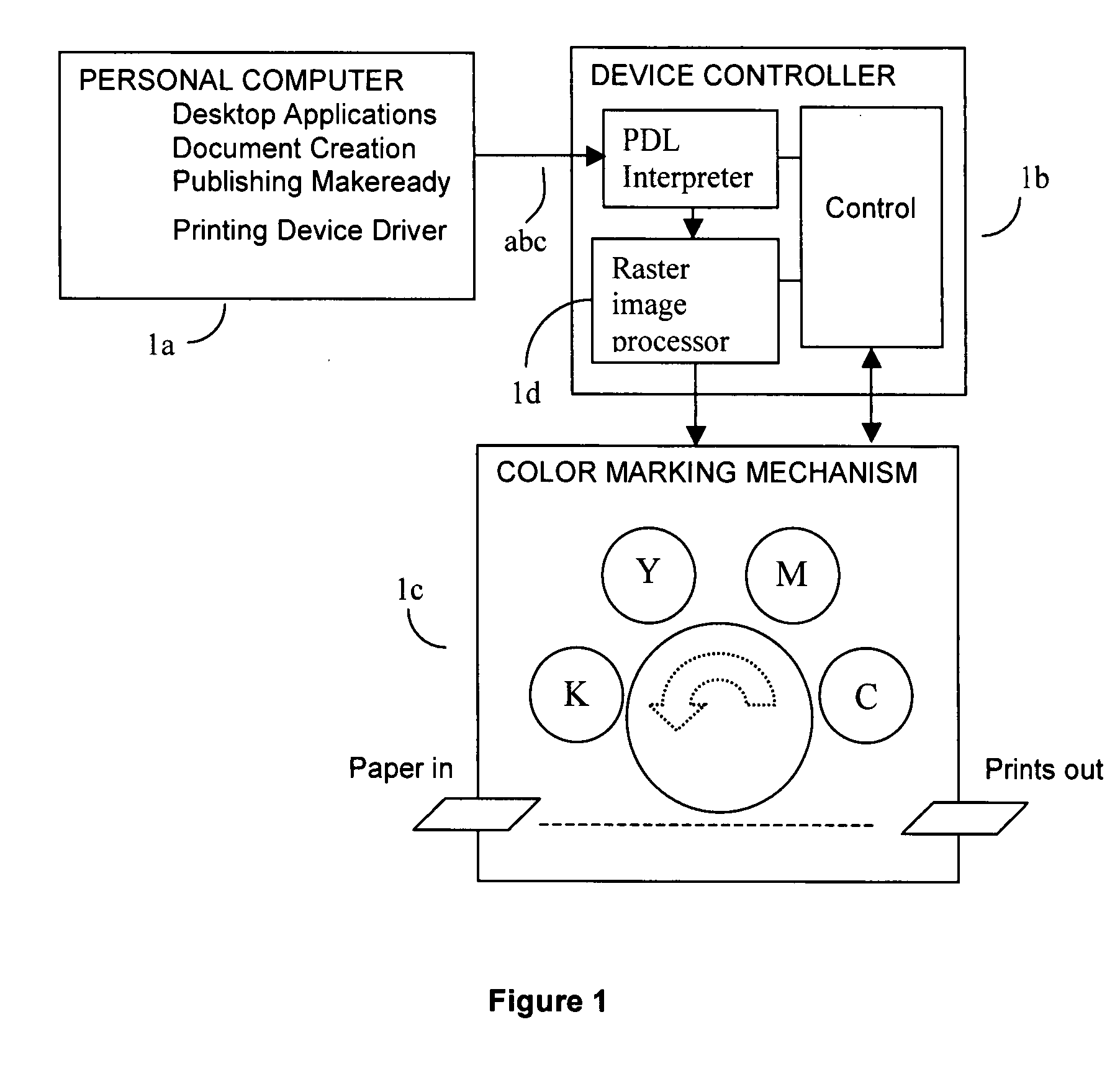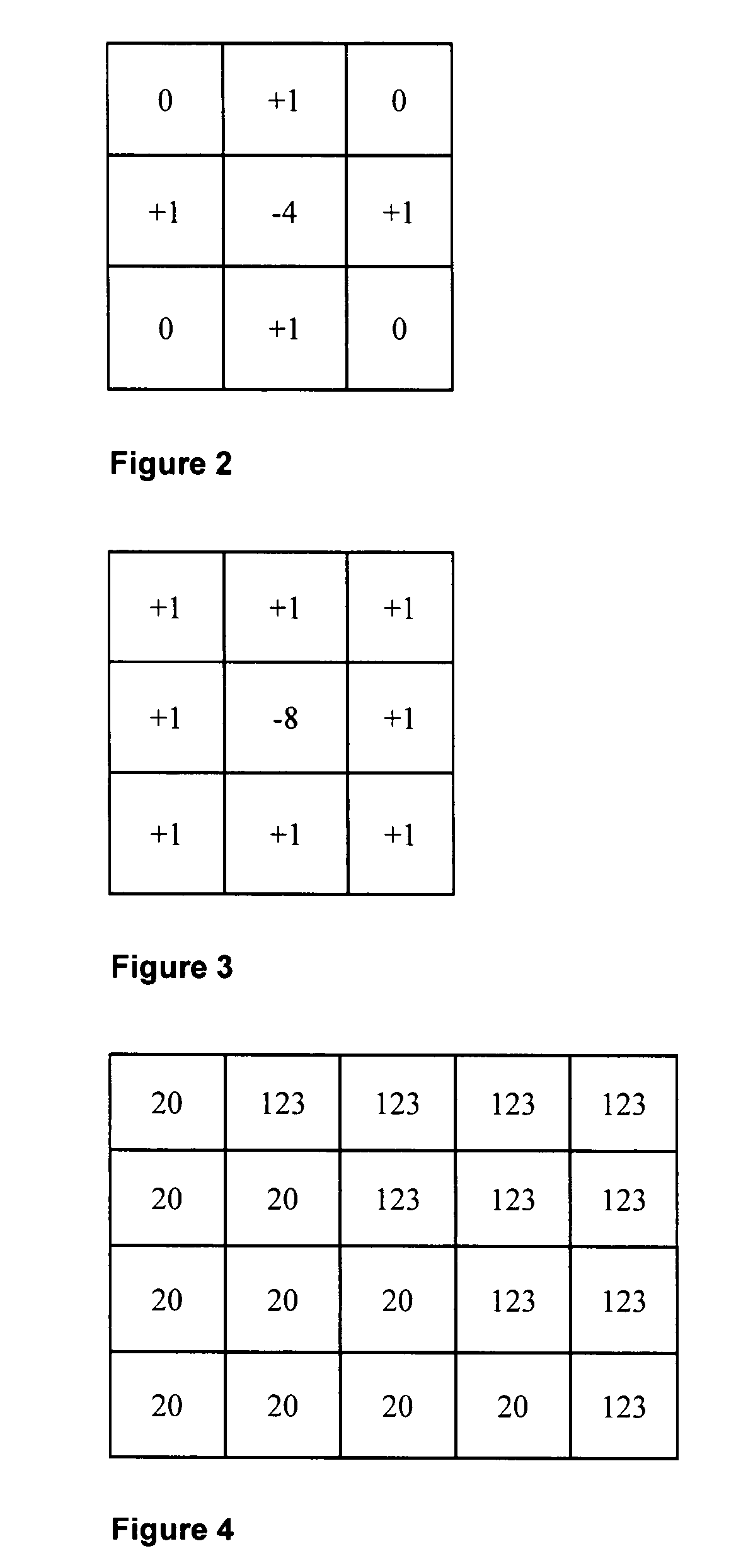Trapping method for digital color printing
- Summary
- Abstract
- Description
- Claims
- Application Information
AI Technical Summary
Benefits of technology
Problems solved by technology
Method used
Image
Examples
Embodiment Construction
Object Edge Detection
[0063] Object edge detection is performed on each color plane independent of other color planes. The well-known method of convolution with a so-called Laplacian kernel is used for each pixel in the color plane. The result can be thought of as, in effect, a new plane of convolved values whose dimensions correspond pixel-for-pixel with the original plane. For efficiency and resource reasons in a practical software implementation for trap widths up to one pixel only three scanlines are convolved at a time. This three scanline window starts at the top of the page raster image and moves downwards to the bottom of the page one scanline at a time as each scanline is trapped. For trap widths up to two pixels, five scanlines are used in the same way. In practical hardware, convolutions are calculated, but they are not saved to a “new plane.” Thus a vertical “swath” of five convolution values (for 1.5 and 2.0-pixel traps) is generated in a hardware pipeline.
[0064] The ...
PUM
 Login to View More
Login to View More Abstract
Description
Claims
Application Information
 Login to View More
Login to View More - R&D
- Intellectual Property
- Life Sciences
- Materials
- Tech Scout
- Unparalleled Data Quality
- Higher Quality Content
- 60% Fewer Hallucinations
Browse by: Latest US Patents, China's latest patents, Technical Efficacy Thesaurus, Application Domain, Technology Topic, Popular Technical Reports.
© 2025 PatSnap. All rights reserved.Legal|Privacy policy|Modern Slavery Act Transparency Statement|Sitemap|About US| Contact US: help@patsnap.com



